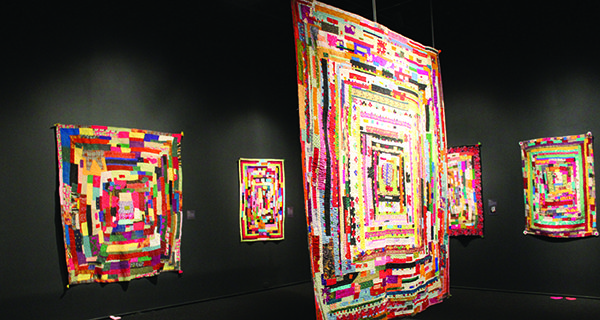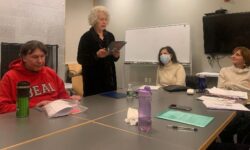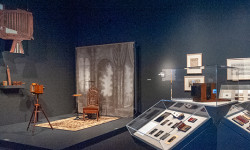[ccfic caption-text format="plaintext"]
By Laura Drinan
Hometown Weekly Reporter
Since its establishment in its present form in 1993, the Davis Museum has been a reliable spot to enjoy arts and culture for students and visitors of Wellesley College. Free and open to the public Tuesday through Sunday, the Davis Museum offers incredible collections from around the globe.
With the college’s spring semester well underway, the Davis launched several new exhibits to be on display until June 10, 2018.
In the past decade, the Davis Museum has collected a variety of posters and prints to be displayed upstairs in their “Artists Take Action!” exhibition. The activist art collection includes historical and contemporary prints that describe political unrest, emphasize social justice issues, and funded social causes. Students at Wellesley College will be working with the prints over the course of the semester to write and record material for the Davis’ mobile app.
The museum also challenges its visitors to look at broken pieces of art in a new way with their exhibition called “Fragment: A Museum’s Mid-Century Legacy.” The collection includes fragments of art from around the globe, which the museum collected from the 1930s to the early 1960s. Included in the exhibition are pieces from Greek and Egyptian sculptures, a chunk of a Roman pillar, and several other artifacts from Europe, Africa, and Asia.
In the room where Hrair Sarkissian’s drone-filmed video of a refugee path once played, brilliant patchwork quilts now hang on the walls. The quilts are a part of “Soulful Stitching,” an exhibition featuring the patchwork “kiwandi,” which tells the history the Siddis of Karnataka, the descendants of African immigrants in South Asia and African slaves of India, who escaped to the mountains of Northern Karnataka. The quilts celebrate the vibrant colors of African clothing and were traditionally created to stay warm during monsoon season.
“Intermezzi: The Inventive Fantasies of Max Klinger” offers visitors a look at figures from mythology and German literature. The black-and-white print cycles from the nineteenth-century German artist provide amazing details and mix realism with romanticism.
Downstairs, visitors are asked to pay an admission fee for the exhibition “Clarence H. White and His World: The Art and Craft of Photography, 1895-1925.” White was a pioneer in photography in the early 1900s and helped shape the emerging art form. The Ohio-raised photographer became an internationally acclaimed artist, known for highlighting aesthetics and evoking feelings in his photos, rather than abiding to the rules of conventional technical training.
The Davis Museum’s spring exhibitions are sure to impress visitors and provide them with a newfound appreciation for art, history, and culture.






















